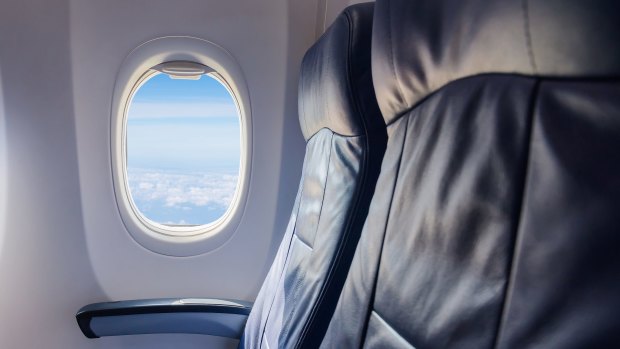This was published 7 years ago
Why plane windows are round: The reason plane windows were changed from square to round
By Hugh Morris

Oval windows was introduced as a stress-alleviating option to square windows.Credit: iStock
It's hard to imagine aircraft having ungainly square windows - but they once did.
It was not until late into the 1950s that the round or oval cabin windows we all know and love were introduced, and it was not merely for aesthetic reasons.
Kitted out with square windows, the de Havilland Comet was the world's first commercial jetliner. First flown in 1949, it was set to revolutionise air travel for millions.
At first, the Hertfordshire-made aircraft lived up to the hype, carrying 30,000 passengers in its first year, including Queen Elizabeth, the Queen Mother and Princess Margaret, guests on a special flight in 1953, hosted by Sir Geoffrey and Lady de Havilland. Its engines allowed the Comet to fly higher than its competitors, above 30,000 feet, increasing speed by as much as 50 per cent as well as avoiding bad weather.
By summer 1953, eight Comets were leaving London each week, bound for Johannesburg, Tokyo, Singapore and Colombo. BOAC was a key customer, while Air India, Pan Am and Japan Air Lines were just a few of the raft of carriers to place orders.
See also: Plane secrets: 10 things on an aircraft you never knew about
But its windows were to be its downfall. Two fatal crashes in 1954 - Flight 781 from Rome and Flight 201, bound for Johannesburg - accounting for 56 lives, were found to be the result of structural weaknesses in the fuselage, caused by dangerous stresses at the corners of the square windows. The harsh angles meant that the surrounding metal experienced pressure two to three times greater than elsewhere in the cabin.
A number of inquiries into the crashes highlighted metal fatigue as a key cause of the fuselage breaking up, prompting de Havilland to modify the design of its later aircraft, introducing the stress-alleviating oval windows that we see today. The company also increased the thickness of the Comet's fuselage walls.
See also: The world's safest airlines named
The Comet's popularity never recovered, however, with the high-profile crashes leading to the withdrawal of the aircraft from service for several years, as well as the cancellation of orders. Meanwhile, rival manufacturers heeded the lessons and stole a march on de Havilland.
Though numbers in the skies dwindled, the Comet is still regarded as one of the most adventurous aircraft in aviation history, paving the way for the likes of Boeing.
"I don't think it is too much to say that the world changed from the moment the Comet's wheels left the ground," said Tony Fairbrother, an engineer on the maiden flight.
It was in 1997 that the last Comet, a later variation on the original, made its final flight. The only complete remaining Comet 1 is on display at RAF Museum Cosford. De Havilland ceased to be in 1964.
The Telegraph, London
See also: The best seats in economy class
See also: Why flight attendants dim the lights for take-off
Sign up for the Traveller newsletter
The latest travel news, tips and inspiration delivered to your inbox. Sign up now.